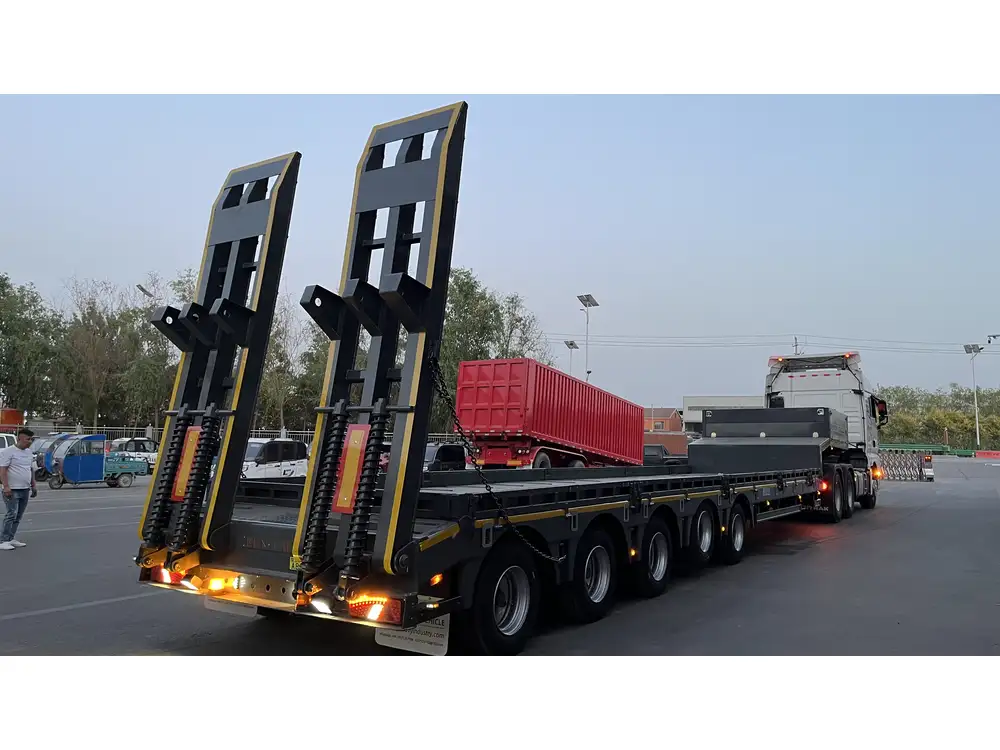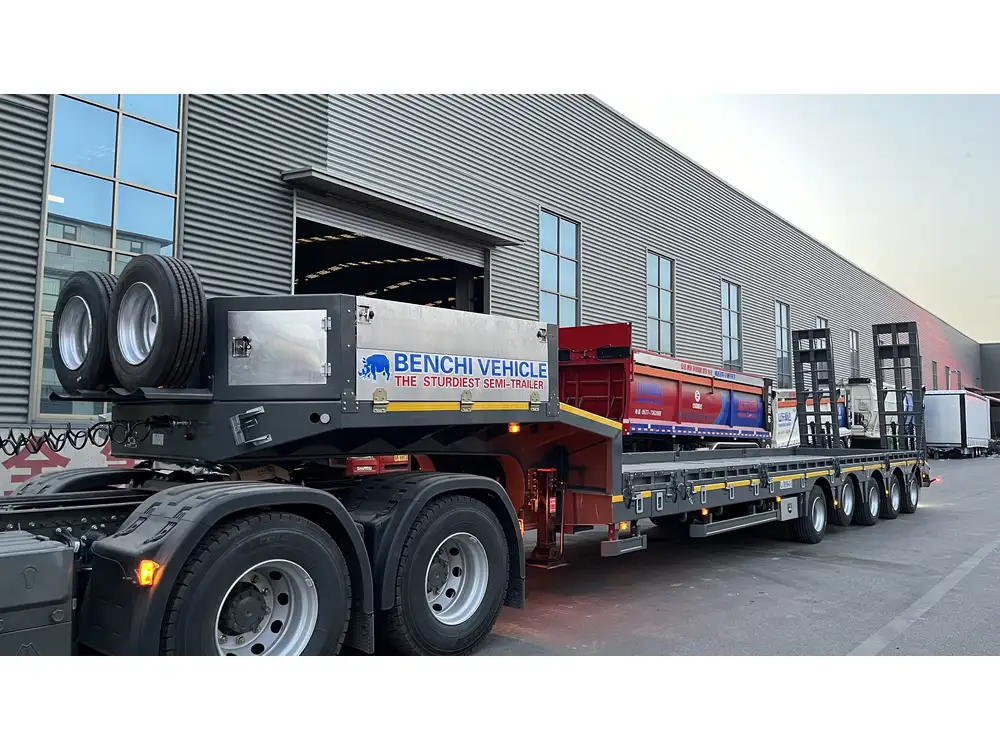Building racks for flatbed utility trailers can be a transformative project that enhances versatility, improves efficiency, and augments storage capabilities. Whether you need to haul lumber, tools, or equipment, a well-designed rack will elevate your flatbed utility trailer’s functionality. In this comprehensive guide, we will explore the process, considerations, and various design options to ensure your trailer is optimally equipped for your hauling needs.
Understanding Your Needs
Before diving into rack construction, it’s imperative to assess your specific requirements. Here are a few questions to consider:
| Consideration | Details |
|---|---|
| What will you be hauling? | Assess weight, dimensions, and material types. |
| How frequently will you use the racks? | Regular use may require more robust designs. |
| Are there any local regulations? | Municipal codes may impose restrictions on trailer modifications. |
| Will you need removable or permanent racks? | Determine if you want flexibility in usage. |
Essential Materials and Tools

Materials
When building your racks, choosing the right materials is crucial. Common materials include:
- Steel: Strong and durable, ideal for heavy loads.
- Aluminum: Lightweight and corrosion-resistant. A great choice for frequent towing.
- Wood: Suitable for lightweight applications and easy to work with.
Tools
Here’s a list of essential tools for constructing your flatbed trailer racks:
| Tool | Purpose |
|---|---|
| Measuring tape | For accurate dimensions and placements. |
| Angle grinder | For cutting metal and finishing edges. |
| Welding machine | To join metal components securely (if using steel). |
| Drill | To create holes for screws or rivets. |
| Screwdriver set | For assembling components. |
| Level | Ensures evenness in setups. |
| Safety gear | Gloves, goggles, and helmets for protection. |
Design Considerations

Basic Rack Structures
- Vertical Racks: Ideal for storing long materials like lumber or piping.
- Horizontal Racks: Suitable for stacking and transporting large items.
- Side Racks: Efficiently utilize the trailer’s sides, offering additional storage without occupying the main deck.
Load Capacity
Determining the weight limits of your trailer is crucial. Always check the manufacturer’s specifications before proceeding with a design.
Style and Aesthetics
While functionality is paramount, aesthetics shouldn’t be overlooked. Consider:
- Color and Finish: Rust-proof paint or powder coating can add longevity and beauty.
- Design: A sleek, streamlined look can enhance the trailer’s overall appeal.

Step-by-Step Rack Building Process
Step 1: Measure and Plan
Establish the dimensions for your rack based on your needs and the flatbed trailer’s specifics. Create a detailed sketch that includes:
- The height of the rack
- Width and length of each level
- The spacing between levels
Step 2: Cut the Materials
Using your measurements:
- Steel: Cut with an angle grinder for precise edges.
- Aluminum: A hacksaw or chop saw can be effective.
- Wood: Use a circular saw for clean cuts.

Step 3: Assemble the Rack
Vertical Racks
- Base: Create a sturdy square or rectangular base using thick metal or lumber.
- Supports: Attach vertical supports to the base using suitable fasteners, ensuring they are level.
- Crossbars: Install crossbars to provide stability. Use welding for metal or screws for wood.
Horizontal Racks
- Frame: Like vertical racks, start with a base, but expand outward.
- Supports: Levelly place horizontal supports where needed, spaced based on the cargo.
- Reinforcements: Add diagonal bracing for additional strength.

Step 4: Secure the Racks to the Trailer
Using the appropriate mounting brackets, secure your racks firmly to the trailer. Make sure to:
- Check Load Distribution: Ensure the weight is evenly distributed across the trailer.
- Confirm Tightness: Regularly inspect screws and bolts to prevent loosening over time.
Step 5: Paint and Finish
Provide a protective coat by applying rust-resistant paint or a finish. This step increases durability and enhances appearance.
Safety Tips
Constructing racks requires diligence to prevent accidents. Here are essential safety measures:
- Wear Protective Gear: Gloves, helmet, and goggles are crucial during cutting and welding processes.
- Work in a Well-Ventilated Area: Especially important if welding or using strong adhesives.
- Use Proper Lifting Techniques: When handling heavy materials, bend your knees and keep your back straight.

Frequently Asked Questions
1. How much weight can a flatbed utility trailer rack hold?
The weight capacity varies depending on the rack’s design and the materials used. Always consult your trailer’s specifications for guidance.
2. Can I build removable racks?
Yes, utilizing bolt-on mounting brackets allows for easy installation and removal of the racks, providing flexibility for different hauling needs.

3. What maintenance is required for trailer racks?
Inspect for rust, loose bolts, and structural integrity regularly. Clean the racks occasionally to prevent dirt and grime buildup.
4. Are there pre-made racks available for purchase?
Certainly! Various manufacturers offer pre-designed racks for flatbed trailers. It’s beneficial to research options that suit your specific hauling requirements.
Conclusion
Building racks for a flatbed utility trailer offers numerous benefits in terms of efficiency, organization, and functionality. By understanding your specific needs, carefully measuring and planning your design, and adhering to safety protocols, you can create a perfectly tailored solution for your hauling demands. Investing time and resources into constructing these racks not only maximizes your trailer’s potential but also enhances the overall utility, ensuring you’re prepared for any transportation challenge that comes your way.
Whether you choose to construct a permanent or removable solution, taking thoughtful considerations into account will lead to a functional and aesthetically pleasing addition to your trailer. With dedication and creativity, your flatbed utility trailer can become the indispensable tool you need for a multitude of tasks.



